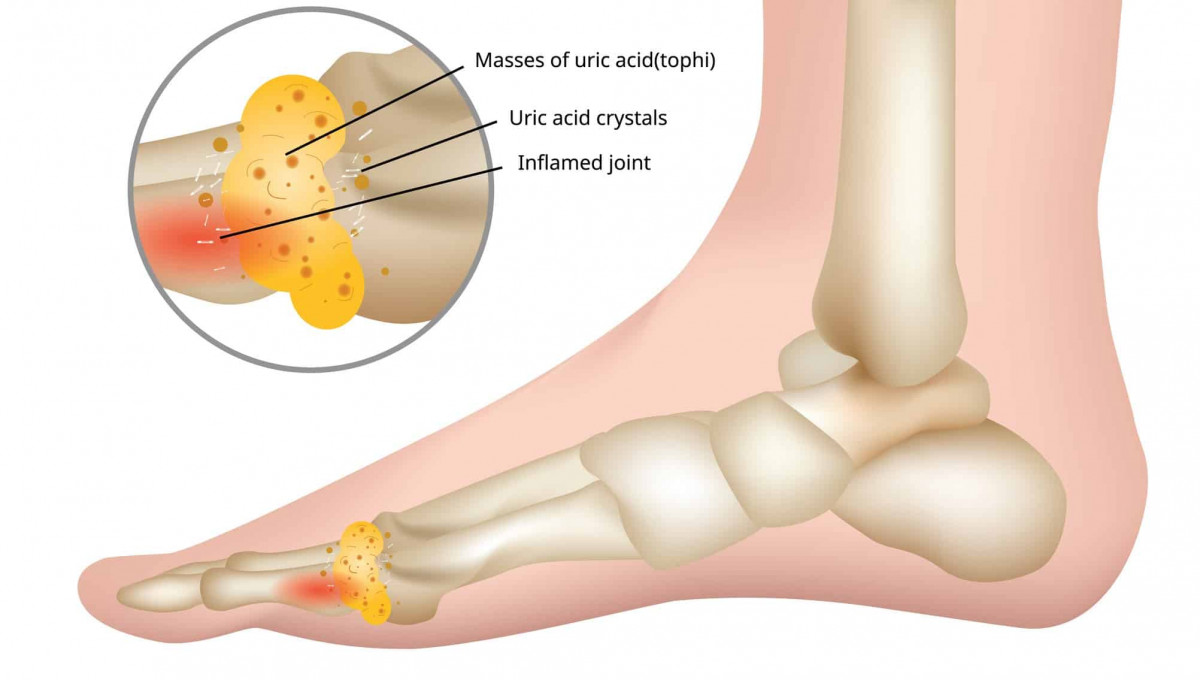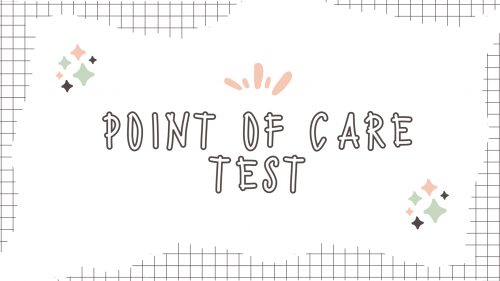Gout or better known as "gout" is a joint disease that occurs due to uric acid levels that are too high in the blood. Under normal conditions, uric acid dissolves in the blood and will pass through the urine. However, under certain conditions, the body can produce excess amounts of uric acid or experience interference in removing this excess uric acid, so uric acid accumulates in the body.
Gout is a progressive disease due to the deposition of MSU (Monosodium Urat) crystals in the joints, kidneys, and other connective tissues, as a result of chronic high uric acid levels (hyperuricemia). Without effective treatment, this condition can develop into chronic gout, the formation of tofus and can even lead to severe kidney function disorders and decreased quality of life.
Gout occurs in 1-2% of the adult population and is the most common cause of inflammatory arthritis in men. The prevalence of gout is estimated to be 13.6 per 1000 men; and 6.4 per 1000 women. The prevalence of gout increased with age with a mean of 7% in men >75 years and 3% in women >85 years.
Research in Indonesia by Raka Putra et al showed that the prevalence of hyperuricemia in Bali was 14.5%, while the results of a study on the Sangihe ethnic group in North Minahasa Island by Ahimsa & Karema K showed that the prevalence of gout was 29.2%.
How Does A Doctor Diagnose GOUT?
The natural course of gout consists of three phases, including The natural course of gout, consists of three phases, including:
- Hyperuricemia without clinical symptoms
- Acute gouty arthritis interspersed with intervals without clinical symptoms (intercritical phase)
- Chronic gouty arthritis
Hyperuricemia without clinical symptoms is characterized by serum uric acid levels >7.0 mg/dl in men, and >6.0 mg/dl in women; which means it has passed the solubility limit in serum. This period can be quite long and can partially turn into gouty arthritis. The first attack of acute gouty arthritis affects the 1st metatarsophalangeal joint (MTP) in about 80–90% of cases, which is classically called podagra. The onset of the attack is sudden, the affected joint develops erythema (redness) warmth, swelling, and pain.
The second attack of acute arthritis can be experienced within 6 months to 2 years after the first attack. The second acute attack and so on can affect more than one joint, can involve the upper leg, the duration of the attacks is longer, and the interval between attacks is shorter and more severe. An attack of acute arthritis that is not treated properly will result in chronic gouty arthritis characterized by mild inflammation of the joints accompanied by chronic destruction (damage) to the joints experiencing acute arthritis attacks. On physical examination, you will find deformities (deformities) of the joints and tofus in the tissue. Chronic gouty arthritis develops within 5 years of the first onset of acute gouty arthritis in about 30% of untreated patients.
How Is The Therapy For Gout That Needs To Be Known To The Public?
Management of gout without symptoms can be done with lifestyle modifications, including dietary patterns as in general principles of management of hyperuricemia and gout. The use of uric acid-lowering therapy in hyperuricemia without clinical symptoms is controversial. The European League Against Rheumatism (EULAR), the American College of Rheumatology (ACR), and the National Kidney Foundation (NKF) do not recommend the use of uric acid-lowering therapies due to their safety and effectiveness in mind. While the recommendation from the Japan Society for Nucleic Acid Metabolism recommends giving uric acid-lowering drugs to asymptomatic hyperuricemia patients with serum uric levels> 9 or serum uric acid levels> 8 with cardiovascular risk factors (kidney disorders, hypertension, diabetes mellitus, and ischemic heart disease).
Meanwhile, acute gout attacks must be treated as soon as possible. Patients must be well educated to be able to recognize early symptoms and early management of acute gout attacks.
The choice of drug for initial treatment must take into account the presence or absence of contraindications (opposite effect) of the drug, as well as the patient's experience with previous medications.
The recommended drug for acute gout attacks whose onset is <12 hours is colchicine at an initial dose of 1 mg followed 1 hour later by 0.5 mg. Other treatment options include NSAIDs, oral corticosteroids, and/or if joint aspiration is required followed by corticosteroid injection. Uric acid-lowering drugs such as allopurinol are not recommended to start therapy at the time of an acute gout attack, however, in patients already on routine uric acid-lowering drug therapy, therapy is continued. It is recommended that uric acid-lowering drugs be started 2 weeks after the acute attack subsides.
Patients with gout in the intercritical phase and chronic gout require uric acid-lowering therapy and prophylactic therapy to prevent acute attacks. Uric acid-lowering therapy was divided into two groups, namely: the xanthine oxidase inhibitor group (allopurinol and febuxostat) and the uricosuric group (probenecid).
Recommendations For The Management Of Gout in Patients with Impaired Renal Function
Gouty patients with impaired renal function doses of drugs lowering serum uric acid levels (eg probenecid and allopurinol) should pay attention to creatinine clearance. Patients with severe renal dysfunction and experiencing acute gout attacks may be given oral corticosteroids and intraarticular injections. If the pain is still not resolved, opioid analgesics can be added. Allopurinol and its metabolites have a long half-life. In impaired renal function, the dose of allopurinol is adjusted to the creatinine clearance.
Lifestyle Changes in People With Gout
Your doctor may instruct you to fast (including drinking) for 8 to 10 hours before taking the test. You may also be instructed to limit your activity levels in the hours leading up to the exam.
- Diet; avoid foods that are high in purines such as liver, gizzard, kidney, offal, and extracts. oysters, scallops). Drinking water intake> 2 liters per day is recommended
- Physical training; performed regularly 3-5 times a week for 30−60 Exercises including muscle strength training, muscle, and joint flexibility, and cardiovascular endurance
- Etc; avoid active and passive smoking
How To Measure and Monitor Uric Acid Levels in The Blood Practically?
Measurement of uric acid levels in the blood can easily be done independently and practically with the UASure Blood Uric Acid Monitoring System, which is a POCT (Point of Care Test) tool that can be used to monitor the uric acid profile in the body so that it can immediately take action. when the uric acid concentration in the blood is too high or low. The UASure Blood Uric Acid Monitoring System is a new generation handheld system on the market for healthcare professionals and even individual users with the convenience of a portable device and easy operation for self-monitoring of blood uric acid.
The following are the features and advantages of the UASure Blood Uric Acid Monitoring System product,
Features
- Limit of the measurement range of uric acid in the blood: 3 - 20 mg/dL, (1.1 - 33.3 mmol / L)
- Measurement Time: 30 seconds
- Sample Volume : 3 µL Type of Examination Sample: Capillary blood from a finger or venous blood (Whole blood)
Benefit
- With a wide range of test ranges, including the uric acid profile is too high or too low
- Measuring time is short, very fast and the procedure is easy to perform
- A very small volume of blood samples will make it easier for you to do the examination
- A capillary blood sample from a finger is a very easy sample to take
With the UASure Blood Uric Acid Monitoring System product from Apexbio, you can easily measure and monitor uric acid levels in your blood.
Reference:
- Insert Page UASure Blood Uric Acid Monitoring System by Apexbio
- Guidelines for the Diagnosis and Management of Gout, ISBN 978-979-3730-31-8, Recommendation of the Indonesian Rheumatology Association, 2018






